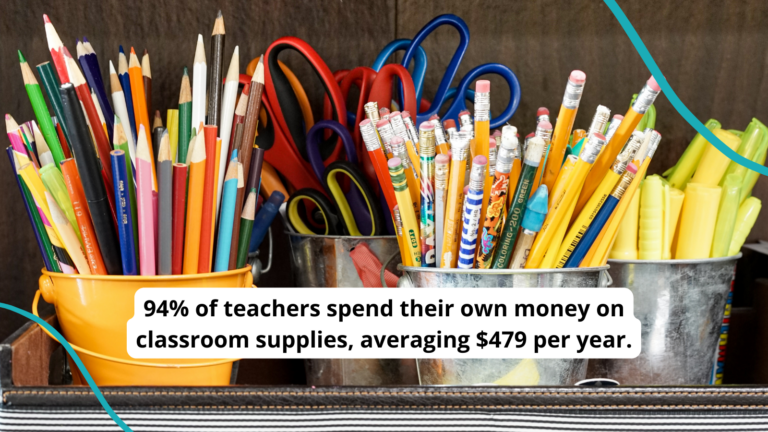Whether you are a brand-new teacher, moving to a new grade, or just need to replace used-up or worn-out supplies, here are some great ideas for how and where to get your classroom supplies without going broke.
1. The dollar store is your best friend.
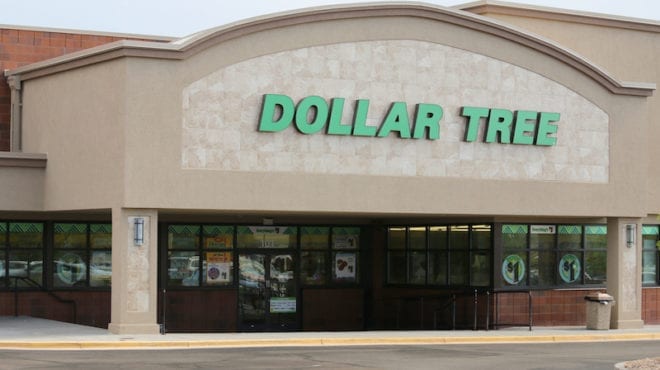
Teachers love the dollar store because there are so many options. You can get dollar store items for math, art, reading, science, decoration, and a lot more. Check out some of our favorite dollar store hacks here. You’ll also want to check out the dollar section at stores like Target, Wal-Mart, and even Michaels. You can often find some hidden gems.
2. Make art instead of buying it.
Erika S. offers this money-saving tip: Don’t spend money on posters. Instead, she recommends that you stock up on art supplies and then get your students involved in making posters and charts.
She says she will do this for just about everything, including alphabet letters for the wall. “It helps us build community in the classroom, and it also helps me assess my students’ motor skills, their ability to follow direction, stay on task, and their overall attention to detail. This is a great way for us to start our year.”
3. Create a classroom wish list on Amazon.
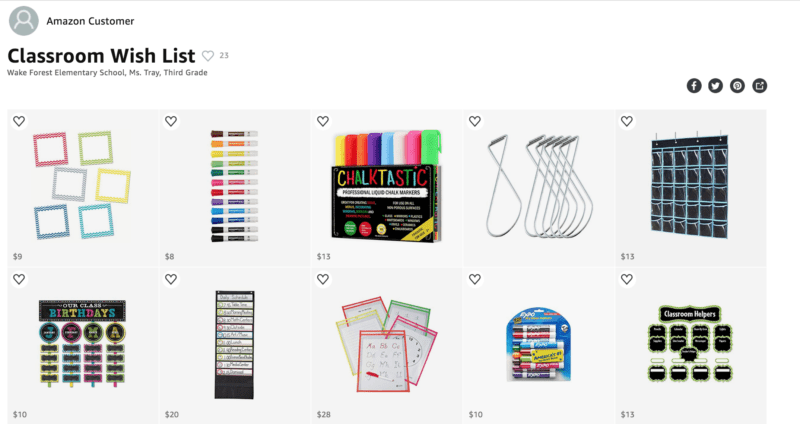
Whether you love it or hate it, Amazon is a powerhouse and a go-to source for many people buying books, supplies, and other everyday essentials. If you set up an Amazon wish list for your classroom, then you’ll be able to quickly and easily share it with parents, friends, and others who want to donate to your classroom.
[contextly_auto_sidebar]
4. Salvage items from the end of the year.
You know how students clean out desks at the end of the year and teachers clean out classrooms? Well it’s time to salvage and reuse some of those items. It will take you some time and effort to sort everything, but you can save a lot of money.
5. Go to rummage sales.
Summer is the perfect time to go to garage sales, and you can stock up on books, baskets, containers, and even furniture for your classroom. Barbara S. writes, “I once bought books, baskets, lesson plans and a collection of seashells at a garage sale of a retired teacher looking to clear out her house. You never know what you’ll find.”
6. Check out NAEIR.
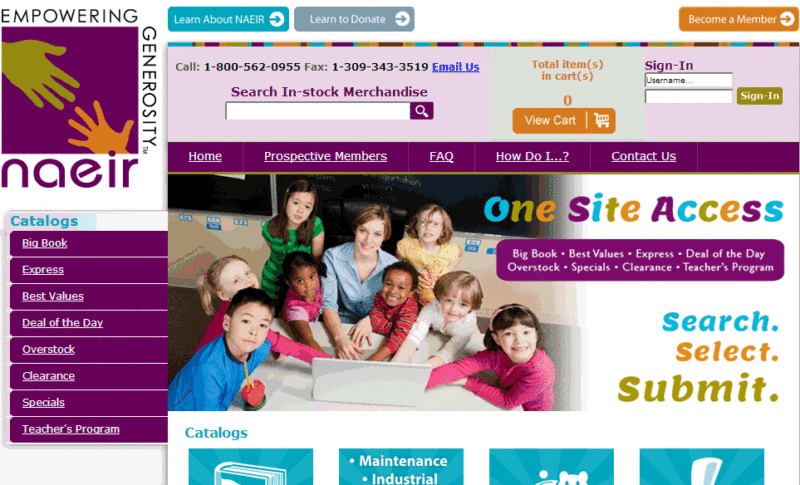
If you haven’t heard of NAEIR, then it’s time. They are a company that takes excess inventory or donations from big companies and then they pass along those savings to schools or nonprofits with great deals. You’ll find deals from places like 3M, Crayola, Office Depot, Paper Mate, and more.
7. Seek out used book sales.
You can score some serious deals by checking out used book sales in your community. Libraries will definitely have sales, but be sure to also look for church and community book sales. You can build up a classroom library really quickly.
8. Tap into the power of social media.
Don’t be shy about making a social media post, asking family and friends if they have anything they can donate to your classroom. It’s best to be specific about what you need because then people will be more likely to think, “Oh yeah, I have that!”
9. Try your local neighborhood group, church, or local listserv.

Social media isn’t the only way to request items. You probably already belong to some sort of group or organization where you can post a request. There are also groups like Nextdoor that you can check out.
10. Check in with local businesses.
It’s best to be really specific before you approach a business to ask for a donation. For instance, do you need some board games for those days of indoor recess? Ask a toy or gaming store if they have anything they can give. Or do you need sports equipment for recess? Ask a sporting goods store or used sporting goods store for specific items.
11. Get started now with Donors Choose .

Have you ever seen the stories about teachers getting their Donors Choose project fully funded? And then you say to yourself, “I should’ve had my Donors Choose project up there!” Go ahead and put your project or big idea up there now. Want to have a robotics area in your classroom? Looking to start a makerspace? Want to have flexible seating in your classroom? Don’t be shy about setting up a Donors Choose campaign. Here’s our guide for getting started.
12. Reach out to retiring teachers.
Find out if any teachers are retiring or leaving the school district. They might be willing to let their supplies go for free or cheap. You might also check with teachers who are changing grades and won’t need the same items. As Barbara R. says, “Teachers don’t like to throw away anything—they’d much rather give it to another teacher.”
13. Shop back-to-school sales wisely.

Really watch sales at the beginning of the school year. Susan A. says she has even found crayons for a dime a box. “Buy as much as you can afford because when you run out in the middle of the year, the prices to restock are much higher.”
14. Shop your recycling bin.
You can often find good material to repurpose from the recycling bin. Stacy B. writes, “Look for uses in what others consider garbage, such as egg cartons for sorting, plastic milk tops or bottle caps for math manipulatives, plastic containers for storing supplies, or paper towel rolls for crafts.”
15. Reap the rewards of book club.
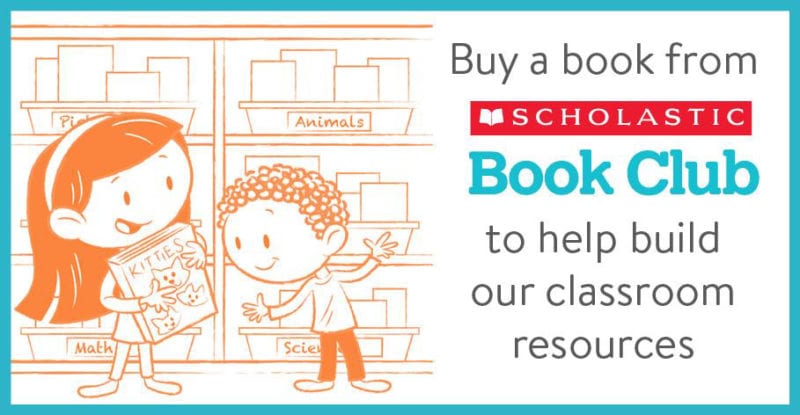
Get started with Scholastic Book Clubs at the beginning of the year. Lindsay says, “It has helped me get tons of free books by stocking up on bonus points. I work in a low-income school, so my orders are never very large, but even a couple of orders each month will help you stock up on books big time!”
16. Talk to the manager.
Ever see amazing deals at a local store only to learn that there’s an item limit? (For instance, those spiral notebooks on sale have a limit of three per person.) Cathe D. recommends talking to the manager and letting them know that you’re trying to buy for a classroom. A lot of times the managers will override the sale limit, especially if it’s at the end of the sale date. (You might have better luck trying this at the end instead of on the first day.)
You could also let the manager know that you’re a teacher. Tell them if they have surplus at the end, you’d love the opportunity to buy in bulk.
17. Request free books through Half Price Books.
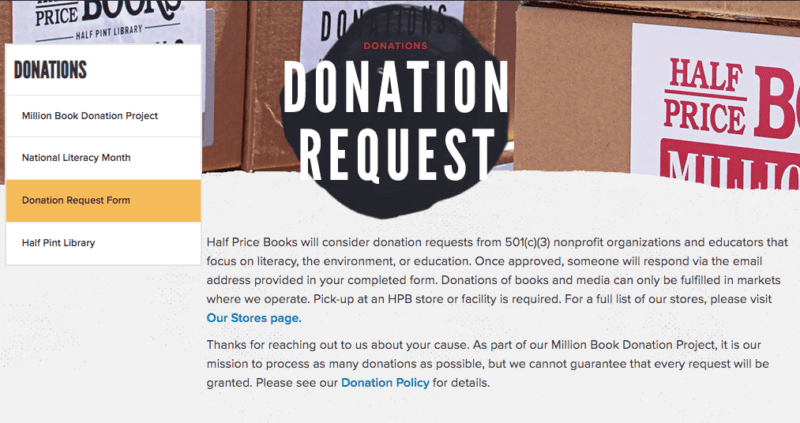
Half Price Books donates books to classrooms and school libraries. Make a request online and cross your fingers!
18. Try Craigslist, Facebook Marketplace, and other online sources.
All of these online communities are a good place to check for deals. Search for teacher supplies, classroom items, or educational materials. You might come across a teacher offloading a lot of material, and they might make a good deal for a fellow teacher. If you live in a big enough area, you might also find a Facebook group specifically for teachers. Search the groups area and see what you find.
19. Join free groups in your area.
People give away lots of great stuff—you just need to know where to look. Craigslist has a free section, you can join free groups on Facebook, and then there’s always places like Freecycle .
If the option is available, consider putting up a wanted post, clearly stating what you’re looking for.
20. Try a little bartering.
Can you trade materials with another teacher changing grades? Do you have other items to barter? There is a section for bartering on Craigslist, or you might just post the idea on your social media. For instance, maybe you can offer some tutoring in exchange for classroom items.
21. Look into local grants.
Sometimes PTA groups have grant opportunities where you can request funds to use for certain items in your classroom. Other parent groups have a less formal process; you just have to ask.
Area businesses might have this as an option, too. When you target your area or community, you’ll likely find better and easier opportunities. Plus, don’t forget to ask other teachers or your principal if they have ideas.
We’d love to hear—how do you stock your classroom without spending much money? Come and share in our WeAreTeachers HELPLINE group on Facebook.
Plus, how to get teacher travel discounts.


